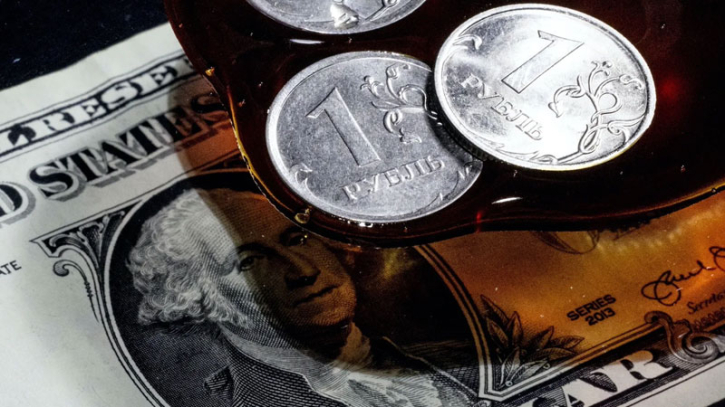Pakistan may default: Moody's predicts

US based Moody’s Investors Service has downgraded the government of Pakistan’s local and foreign currency credit rating to Caa3 from Caa1, suggesting that the risk of default on foreign debt repayment has peaked with little chance for recovery, the Express Tribune reports.
“In the current extremely fragile balance of payments situation, disbursements may not be secured in time to avoid a default,” the global rating agency said in a statement on Tuesday. The decision to downgrade the ratings is driven by Moody’s assessment that Pakistan’s increasingly fragile liquidity and external position significantly “raise default risks to a level consistent with a Caa3 rating.”
In particular, the country’s foreign exchange reserves have plunged to “extremely low levels, far lower than necessary to cover its imports needs and external debt obligations over the immediate and medium term.”
The global rating agency has cut Pakistan’s rating for the second time in the past fourth months in the wake of a further fall in the country’s foreign exchange reserves. Currently, the country’s reserves stand at around $4 billion, import cover of less than one month.
The last time Moody’s revised Pakistan’s rating down to Caa3 from B3 was in October 2022.
The agency has, however, “changed the outlook to stable from negative,” in anticipation that the government will succeed in reviving the International Monetary Fund (IMF) loan programme and acquire new foreign debt required for the remaining four-months of the current fiscal year 2023, according to Moody’s statement on Tuesday. Prime Minister Shehbaz Sharif’s statement from last week suggests that his government is expected to achieve staff-level agreement (SLA) with the IMF this week or early next week. After SLA, the IMF executive board may take another few weeks to approve and release the next tranche of $1.1 billion.
Although the government is implementing some tax measures to meet the conditions of the IMF programme and a disbursement from the IMF may help cover the country’s immediate needs, “weak governance and heightened social risks impede Pakistan’s ability to continually implement the range of policies that would secure large amounts of financing and decisively mitigate risks to the balance of payments.”
The rating agency also questioned whether Pakistan was negotiating a new loan programme with the Fund to meet its external financing requirements beyond June 30, 2023, as “Pakistan’s external debt repayments will remain high for the next few years.” The government is to repay around $73 billion between FY24 and FY26, it was learnt.
According to Moody’s “there is very limited visibility on Pakistan’s sources of financing for its sizeable external payments needs…beyond the life of the current IMF programme that ends in June 2023.” “In the absence of an IMF programme after June 30, 2023, Pakistan is unlikely to unlock sufficient financing from multilateral and bilateral partners.” The agency further estimates that interest payments will increase to around 50% of the government’s revenue in fiscal year 2023.
It noted the inflation reading has spiked to “very high” in Pakistan, with food inflation at 42.9% and transport inflation at 39.1% year-on-year in January 2023.
Some two weeks ago, Fitch Ratings downgraded the credit ratings for the second time in the past four months as well. Moody’s said the rating agency has downgraded the government of Pakistan’s local and foreign currency issuer and senior unsecured debt ratings to Caa3 from Caa1. It has also downgraded the rating for the senior unsecured
Medium Term Note (MTN) programme to (P) Caa3 from (P) Caa1. Concurrently, Moody’s has also changed the outlook to stable from negative. “China lent $700 million to Pakistan last week, but still finds the available forex reserves inadequate,” it added. The rating agency estimated that the country needs a total of $11 billion in the remaining four months of the current fiscal year, to finance the current account deficit and meet the foreign debt obligations.
Concurrent with today’s action, Moody’s has lowered Pakistan’s local and foreign currency country ceilings to Caa1 and Caa3 from B2 and Caa1, respectively. “The two-notch gap between the local currency ceiling and sovereign rating is driven by the government’s relatively large footprint in the economy, weak institutions, and relatively high political and external vulnerability risk. The two-notch gap between the foreign currency ceiling and the local currency ceiling reflects incomplete capital account convertibility and relatively weak policy effectiveness. It also considers the material risks of transfer and convertibility restrictions being imposed.”
The stable outlook reflects Moody’s assessment that the pressures Pakistan faces are consistent with a Caa3 rating. “Significant external financing becoming available in the very near term, such as through the disbursement of the next tranches under the IMF programme and related financing, would reduce default risk potentially to a level consistent with a higher rating.”
.png)




